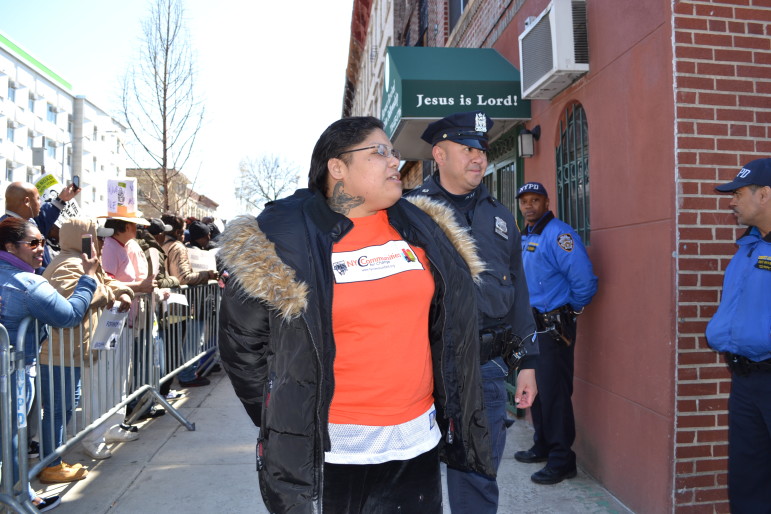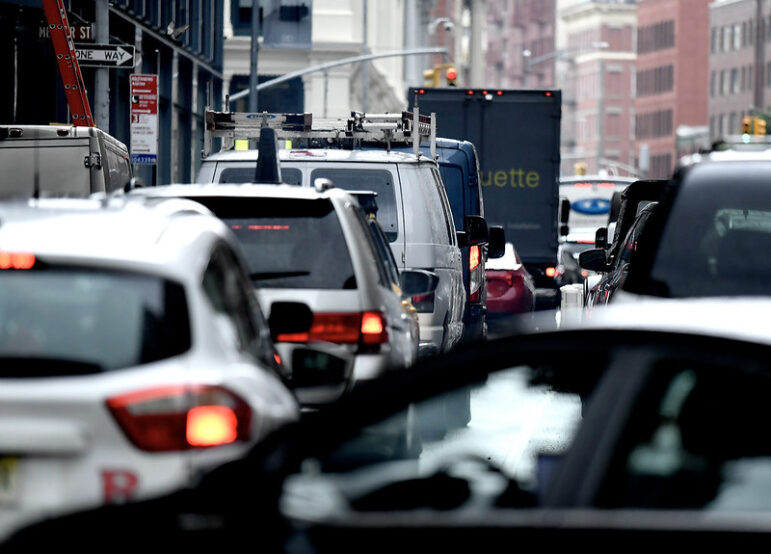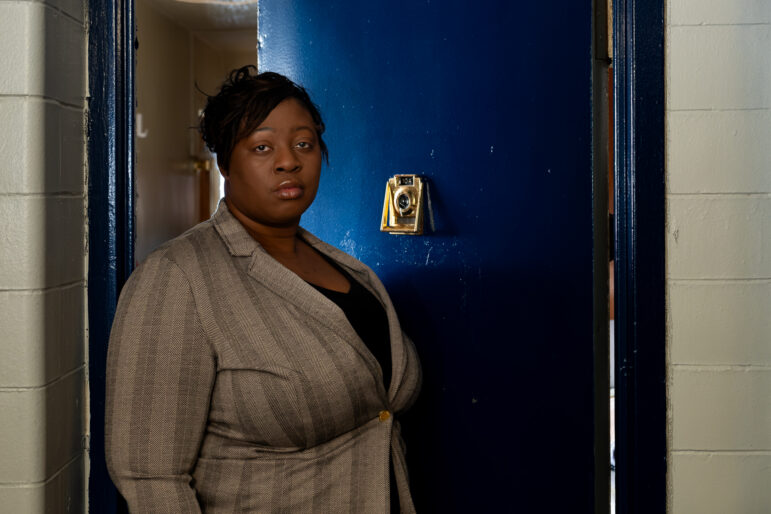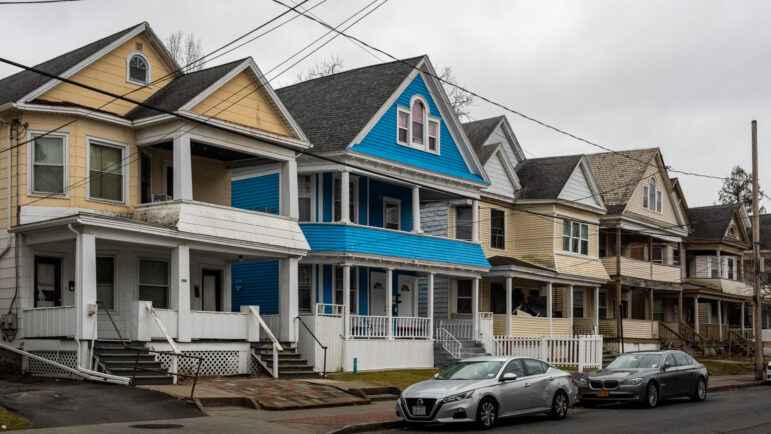
Abigail Savitch-Lew
Local advocate Rachel Rivera gets arrested outside Councilman Espinal's offices on Wednesday.
East New York Councilmember Rafael Espinal and the de Blasio administration have nearly reached a deal to secure passage of the city’s first neighborhood rezoning plan. For the many East New York community residents who fear the plan will lead to displacement—and for organizations across the city who regard the plan as the template for rezonings citywide—the deal is likely to win praise in some regards, but heavily disappoint in others.
As the first of 15 neighborhoods that the city has targeted for a rezoning, East New York will likely get a bit more than it’s share of the $1 billion Neighborhood Development Fund for neighborhood improvements. Courtney Patterson, Espinal’s chief of staff, says that the city will likely commit somewhere in the ballpark of $100 million to East New York, though negotiations continue.
According to a source close to negotiations, these funds would address a variety of needs such as park renovations, high-speed broadband in the Industrial Business Zone, and repairs in existing schools. A new community center might be part of the plan—but, likely to the dissatisfaction of some critics, still only one new school, as proposed earlier by the administration.
Patterson says there’s a good possibility the updated plan will exclude Arlington Village from the rezoning area, one of the central demands of the Coalition for Community Advancement. The dilapidated residential complex is less than a quarter occupied, and has long been eyed by the administration as a potential site for 12-story buildings. The coalition, however, say the Bluestone Group, a private investment firm that brought the property for $36 million after the rezoning was announced, has ignored tenants’ rent-stabilized status and showed no interest in providing deeper affordability beyond the city’s mandatory inclusionary housing requirements. Advocates say excluding the site from the rezoning could force the Bluestone Group to provide community benefits or agree to HPD subsidy program requirements in order to receive approval for an upzoning.
The de Blasio plan set out different affordability requirements for privately owned and publicly owned sites. Patterson said there might be some adjustments to deepen the affordability levels on public sites. It’s possible there may also be news relating to the development of an additional public site for more affordable housing. Units on public sites, however, currently make up less than 5 percent of the total number of units projected under the plan, and an additional public site will not change the fact that East New York’s fate in part rests on the willingness of private developers to reach deeper levels of affordability in exchange for city subsidies.
Espinal’s deal is likely to fall short of many advocates’ demands for deeper affordability levels on private sites, especially a proposal from the New York Communities for Change (NYCC) that developers provide 50 percent of units to families making below 40 percent AMI. (In accordance with the city’s new mandatory inclusionary housing policy, the East New York Community plan would require developers to dedicate a minimum of either 25 percent of units for families making 60 percent AMI, or 20 percent of units for families making 40 percent AMI.)
“Real Affordability For All has done the numbers, and it’s feasible. We are not asking that developers build without any gain, but we are asking that they take a slight cut,” says Renata Pumarol, a spokesperson for NYCC. She added that NYCC is concerned that Espinal has accepted donations to his campaign for reelection from developers involved in the rezoning, including the Bluestone Group. (According to city campaign finance records, the Group has made two, $500 donations to the councilmember’s 2017 committee.) Espinal has refuted that developers’ interests have influenced his hand in the negotiations.
As news of a potential deal—and the likelihood of Espinal’s vote in favor—began to reach the streets, a crowd of more than 60 members from NYCC, the Real Affordability for All Coalition, Make the Road NY, Churches United for Fair Housing and the Black Institute made a last attempt to demand deeper and broader affordability. Ten people squatted in front of Espinal’s door and declared they would go to jail to stop the rezoning.
“I hope he votes no on this plan until he gets it right,” said East New York resident Rachel Rivera before she was arrested for disorderly conduct.








